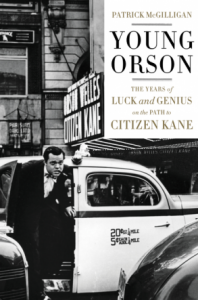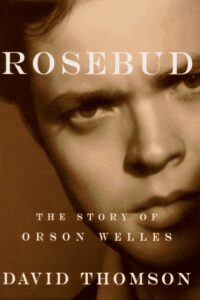Film A Staggering Statistic
Check out the June 26 post on Dave Kehr’s blog for an important piece of news and a staggering statistic.
The important piece of news is the launch of the Turner Classic Movies database, TCMDB, a potential alternative to the often less-than-reliable Internet Movie Database. (Sitting on a panel in Austin with Monte Hellman several years ago, I heard him recount writing to the IMDB to inform them that some of his film credits on the site were incorrect, only to be informed by them that because he wasn’t a qualified film scholar they couldn’t make the required corrections.)
As Dave points out, the TCMDB “has as its core the unsurpassable AFI Catalog of American Feature Films, previously accessible only with a $50 AFI membership (or through certain libraries). For those who don’t know it, the AFI Catalog is a towering work of scholarship that covers the period 1893 to 1971 in exquisite detail, with full credits, reliable plot summaries and significant side notes.” I can only concur with Dave. Indeed, there are times when I think that the only two irrefutably towering achievements of the American Film Institute are David Lynch’s Eraserhead, produced on its west-coast premises, and this reference work.
Read more
A footnote to the following (February 7, 2018): I now regard Patrick McGilligan’s Young Orson: The Years of Luck and Genius on the Path to Citizen Kane as the best of all the Welles biographies to date — and at the very least, the most thoroughly researched. — J.R.
Film Benjamin Schwarz on David Thomson: A defense of Orson Welles
I sent the following letter to the Atlantic last August. I’m not surprised it wasn’t published. But I can’t resist reproducing it now that Benjamin Schwarz, the magazine’s literary editor and national editor, has shown further signs of his David Thomson idolotry while writing about Cary Grant in the current issue. This time Schwarz calls Thomson’s A Biographical Dictionary of Film, now in its fourth edition, the “finest reference book on the movies.” (He also offers some other debatable critical judgments, such as calling Sylvia Scarlett “a mess of a picture” rather than an exciting forerunner of the French New Wave in its daring mix of genres.) But before getting to his assertion about Thomson’s book, let me reproduce my letter:
“It seems sadly characteristic of the mainstream reviewing of film books in general and those about Orson Welles in particular that nonspecialists routinely take precedence over specialists — and that biographers who forgo original research for the sake of speculation or invention, and even admit to doing this, can be deemed superior to actual scholars, at least if their biases match those of the reviewers.
Read more
Here’s the substance of two emails I recently sent to an obit writer at the Tribune:
Read more
From the June 1984 issue of Film Comment. This chronicles my very first visit to the Rotterdam International Film Festival. I believe I was the first member of the American press ever to have been invited (a perk I owe to Sara Driver and Jim Jarmusch having spoken to festival director Huub Bals) — the first of my 20 visits to this very special festival. I’m sorry that Rotterdam no longer invites me (I believe that my last visit there was in 2007), but I guess even the best perks can’t be expected to last forever. My first visit there, in any case, was one of the most memorable; Joseph L. Mankiewicz was there to accept the Erasmus Prize (and to give a press conference at which, if memory serves, he spent almost half an hour answering the first question), and I received my very first glimpses of the work of Raúl Ruiz. I should add that I did festival reports this first year for both Film Comment and Sight and Sound, although it was part of Huub’s singularity that he never required any coverage from me in order for me to get invited back the following year. Read more
This is my fifth column for Cahiers du Cinéma España, which ran in their February 2008 issue. Incidentally, any Americans who might still be skeptical about the multiracial and multicultural composition of the Iranian population are urged to check out the CIA’s web site on this matter: page down to Iran’s ethnic groups, where you’ll find “Persian 51%, Azeri 24%, Gilaki and Mazandarani 8%, Kurd 7%, Arab 3%, Lur 2%, Baloch 2%, Turkmen 2%, other 1%,” and compare this to their 2007 estimates for the U.S. (“white 79.96%, black 12.85%, Asian 4.43%, Amerindian and Alaska native 0.97%, native Hawaiian and other Pacific islander 0.8%, two or more races 1.61%” — something I wish I’d known about when I was having my editorial dispute at the Reader. — J.R.
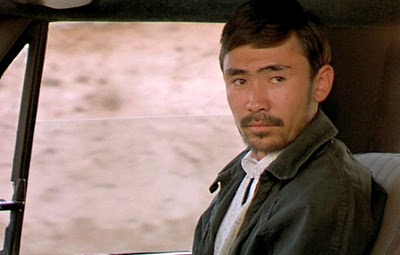
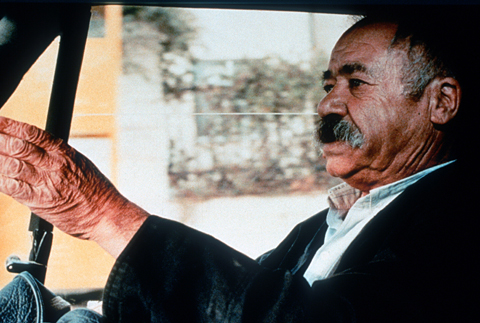
After reflecting in my last column about the “attractions and perils of internationalism,” I’ve been pondering how to distinguish these concerns from those of language, race, and ethnicity. The lack of a common ground in discussing some issues only adds to the confusion. Some months ago, I was shocked when my editor at the Chicago Reader, a weekly “alternative” newspaper where I’ve worked since 1987 (and from which I’m preparing to retire as a staff member in early 2008), eliminated a phrase from an article in which I asserted that Iran was just as multicultural and as multiracial as the U.S., Read more
From the Chicago Reader (October 21, 2007). — J.R.

I haven’t seen David Mamet’s controversial two-character play on the stage, but his own film adaptation (2007) is easily his best movie since House of Games. The two characters are a pontificating, bullying male college professor (William H. Macy) up for tenure and his initially cowed, eventually empowered female student (Debra Eisenstadt), who winds up charging him with sexual harassment. The stage versions have often been attacked for siding with the professor, but what seems most impressive about the movie, which may have benefited from certain refinements in the material, is that the two characters are so evenly matched by the dramaturgy that they become Strindbergian antagonists in a life-and-death struggle — equally odious in their authoritarian reliance on institutions to define their own identities and equally crippled by what might be described as their political impotence, which drives them to reach desperately for whatever institutional weapons are available to them. Within this context, education becomes as much an alibi as political correctness, and the most telling aspect of the struggle is that the two characters, even in their carefully coded sexual roles, become two different versions of the same blocked individual. Read more
Jonathan Rosenbaum was film critic for the Chicago Reader from 1987 to 2008. Born in Alabama in 1943, the son and grandson of movie exhibitors, he grew up in a house designed by Frank Lloyd Wright. While living in Paris (1969-1974), he worked as an extra for Robert Bresson and as a script consultant for Jacques Tati, before working as assistant editor for Monthly Film Bulletin and staff writer for Sight and Sound in London (1974-1977).
His books include IN DREAMS BEGIN RESPONSIBILITIES: A JONATHAN ROSENBAUM READER (forthcoming in early 2024), CINEMATIC ENCOUNTERS 2:PORTRAITS AND POLEMICS (2019), CINEMATIC ENCOUNTERS: INTERVIEWS AND DIALOGUES (2018), GOODBYE CINEMA, HELLO CINEPHILIA: FILM CULTURE IN TRANSITION (2010), THE UNQUIET AMERICAN: TRANSGRESSIVE COMEDIES FROM THE U.S. (2009), DISCOVERING ORSON WELLES (2007), ESSENTIAL CINEMA: ON THE NECESSITY OF FILM CANONS (2004), MOVIE MUTATIONS: THE CHANGING FACE OF WORLD CINEPHILIA (coedited with Adrian Martin, 2003), ABBAS KIAROSTAMI (with Mehrnaz Saeed-Vafa, 2003, expanded second edition 2018), MOVIE WARS: HOW HOLLYWOOD AND THE MEDIA LIMIT WHAT FILMS WE CAN SEE (2000), DEAD MAN (2000), MOVIES AS POLITICS (1997), PLACING MOVIES: THE PRACTICE OF FILM CRITICISM (1995), THIS IS ORSON WELLES by Orson Welles and Peter Bogdanovich (edited, 1992), GREED (1991), MIDNIGHT MOVIES (with J. Read more
From the August 3, 2007 Chicago Reader. — J.R.
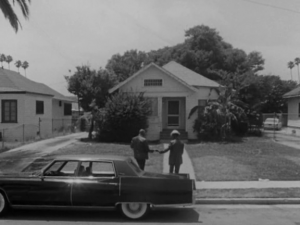
The first feature (1977) of the highly talented black filmmaker Charles Burnett, who set most of his early films in Watts (including My Brother’s Wedding and To Sleep With Anger); this one deals episodically with the life of a slaughterhouse worker. Shot on a year’s worth of weekends for under $10,000, this remarkable work is conceivably the single best feature about ghetto life. It was selected for preservation by the National Film Registry as one of the key works in American cinema — ironic and belated recognition of a film that, until this recent restoration, had virtually no distribution. It shouldn’t be missed. With Henry Gayle Sanders. 87 min. (JR)
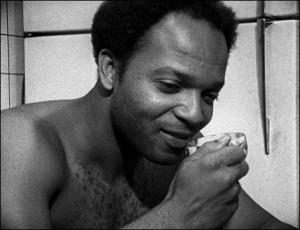 Read more
Read more
Here are ten of the 40-odd short pieces I wrote for Chris Fujiwara’s excellent, 800-page volume Defining Moments in Movies (London: Cassell, 2007). — J.R.
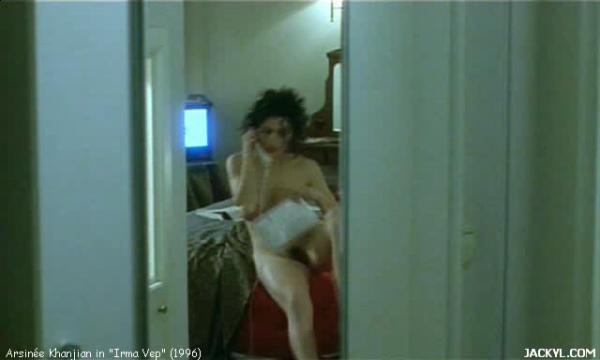
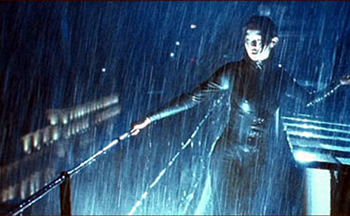
Scene
1996 / Irma Vep – Maggie Cheung stealing Arsinée Khanjian’s jewels
France (Daica Films). Director: Olivier Assayas. Cast: Maggie Cheung, Arsinée Khanjian.
Why It’s Key: If a movie can be said to have an unconscious, here’s where this one’s secret is buried.
Costumed in a tight black latex suit, Maggie Cheung, playing herself, is in Paris to play the title role in a remake of Louis Feuillade’s 1916 crime serial, Les vampires. She also seems to be the object of the sexual fantasies of everyone working on the film —- most noticeably the director (Jean-Pierre Léaud) and the woman handling costumes (Nathalie Richard).
After what seems like a restless, sleepless evening in her hotel room, Cheung goes out into the hallway, still in her suit, stealthily climbs the stairs, and, after spying a maid delivering a tray to a room and leaving, sneaks into the room herself. Still hidden, she sees a nude woman (Khanjian, wife and lead actress of Atom Egoyan) describing her lonely boredom on the phone to someone named Fred, then glimpses the woman’s jewels in another room, which she promptly steals. Read more
From the Chicago Reader (February 21, 2008). I believe this was my last long review before I left my staff job there. — J.R.
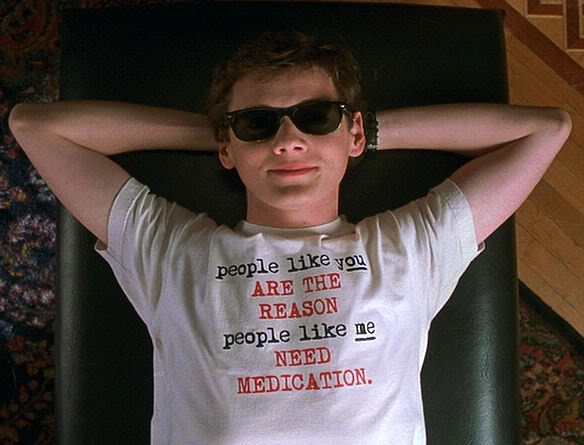
CHARLIE BARTLETT *** 
Directed by Jon Poll
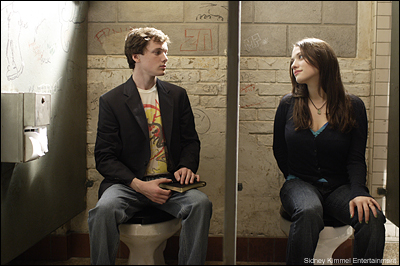
I just rewatched Allan Moyle’s Pump Up the Volume, a radical and rebellious teen movie I gave four stars in 1990. I think it holds up, and apparently I’m not the only one: the average rating of the 62 customer reviews it has on Amazon.com is four and a half out of five stars.
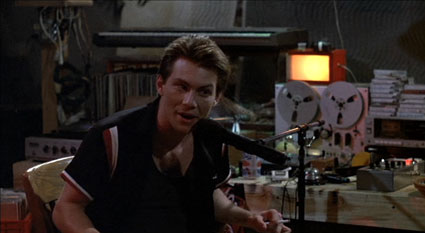
The new rebellious teen movie Charlie Bartlett isn’t as good or as radical; it’s more an edgy comedy than a rabble-rouser. But it reminded me of Pump Up the Volume in many ways: it’s one of the first features for a middle-aged director; it captures teenage despair leading up to a suicide attempt (successful in Pump Up the Volume, unsuccessful here); one of its lead characters has a school administrator as a father (the hero in Pump Up the Volume, the heroine here); and it depicts a general disgruntlement about the way schools are run, culminating in a student uprising. The movies are even comparably derivative of others: Pump Up the Volume plundered some of its best ideas from Rebel Without a Cause, Citizens Band, Network, and Talk Radio, while Charlie Bartlett seems especially indebted to Mumford, all the way down to its final blackout gag. Read more
From the Chicago Reader (April 23, 2007). — J.R.
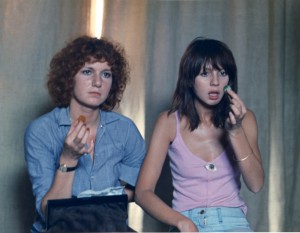
Jacques Rivette’s 193-minute comic feminist extravaganza is as scary and unsettling in its narrative high jinks as it is exhilarating in its uninhibited slapstick (1974). Its slow, sensual beginning stages a meeting between a librarian (Dominique Labourier) and a nightclub magician (Juliet Berto). Eventually, a plot within a plot magically takes shape — a somewhat sexist Victorian melodrama with Bulle Ogier, Marie-France Pisier, Barbet Schroeder (the film’s producer), and a little girl — as each character, on successive days, visits an old dark house and the same events take place. The elaborate Hitchcockian doublings are so beautifully worked out that this movie steadily grows in resonance and power. The four main actresses scripted their own dialogue with Eduardo de Gregorio and Rivette, and the film derives many of its euphoric effects from a wholesale ransacking of the cinema of pleasure (cartoons, musicals, thrillers, and serials). In French with subtitles. (JR)
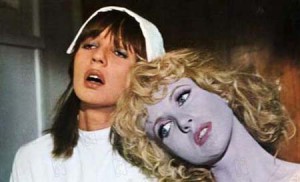 Read more
Read more
From the September 14, 2007 Chicago Reader. — J.R.

David Cronenberg’s follow-up to A History of Violence — starring the same lead, Viggo Mortensen, in a very different part — lacks the theoretical dimension of its predecessor, but it’s no less masterful in its fluid storytelling and shocking choreography of violence. A Russian mafia tale with a London setting, scripted by Steven Knight (Dirty Pretty Things), it confirms Cronenberg’s position as an old-fashioned, almost Dickensian moralist. He refuses to fetishize corruption the way the Godfather films do, while working wonders with a charismatic villain (Armin Mueller-Stahl in a remarkable performance) and creating a charged homoerotic atmosphere. With Naomi Watts and Vincent Cassel. R, 96 min. River East 21. –Jonathan Rosenbaum
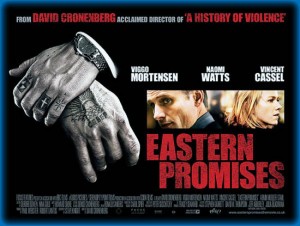
Read more
From the Chicago Reader (November 8, 2007). — J.R.
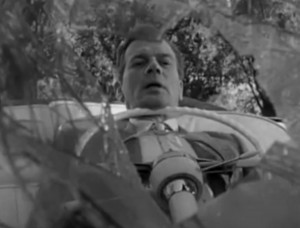
Three early examples of the master’s skill in tailoring his storytelling gifts to the 26-minute format of his celebrated TV show. Included are the very first episode of the series, Revenge (1955), a grim tale costarring Vera Miles and Ralph Meeker, and from the third season, Lamb to the Slaughter (1958), a more characteristic exercise in black comedy adapted from a Roald Dahl story and starring Barbara Bel Geddes. But the real gem is Breakdown (1955), a minimalist tour de force starring (and narrated by) Joseph Cotten as a businessman paralyzed in a car wreck; it belongs among Hitchcock’s neglected masterpieces. 78 min. (JR) Read more
From the Chicago Reader (November 22, 2007). — J.R.

Sometimes cited as the greatest of all Brazilian films, this silent experimental feature (1931) by poet and novelist Mario Peixoto, who never completed another film, was seen by Orson Welles and won the admiration of everyone from Sergei Eisenstein to Walter Salles. But its status as a poetic narrative — about a man and two women lost at sea in a rowboat, whose pasts are conveyed in flashbacks — has kept it in the margins of most film histories, where it’s been known mainly as a provocative and legendary cult item. The remarkably luscious and mobile cinematography (for which cameraman Edgar Brazil had to build special equipment) alone makes it well worth seeing. 115 min. (JR)
 Read more
Read more
From the September-October 1991 issue of Film Comment; this was also reprinted in my first collection, Placing Movies. — J.R.
If one were to undertake a diagnosis of the cultural and historical amnesia that currently afflicts American society in general and the American cinema in particular, the suppression of radical politics as part of our history might be a useful place to start. It is a suppression that comes in many forms, many of them barely conscious.

When a radical youth movie — PUMP UP THE VOLUME — actually gets made and released in the United States today, a repudiation of the 1960s counterculture becomes an obligatory part of its argument, because otherwise many contemporary teenagers would dismiss it out of hand. And when the same film gets reviewed in the United States, even most sympathetic critics find it convenient to overlook the fact that the film is political, for fear of alienating the public. Or when a recent film about Vietnam such as JACOB’S LADDER has the rare courage to attack the Pentagon (unlike, say, BORN ON THE FOURTH OF JULY and CASUALTIES OF WAR), one can predict that, given the present climate in America, it will be attacked by some critics for being exploitative and unserious — and praised by others as entertainment — whereas the issues broached by the film won’t be addressed at all. Read more

